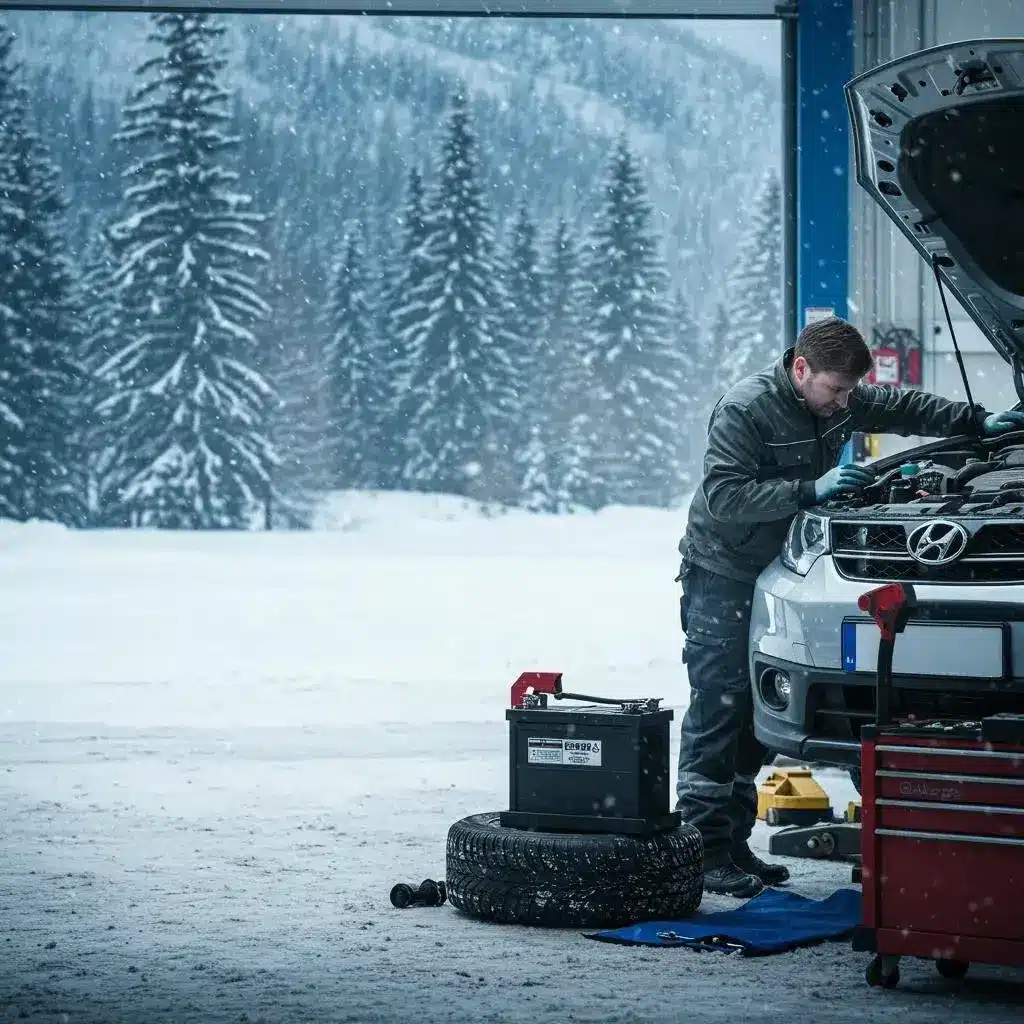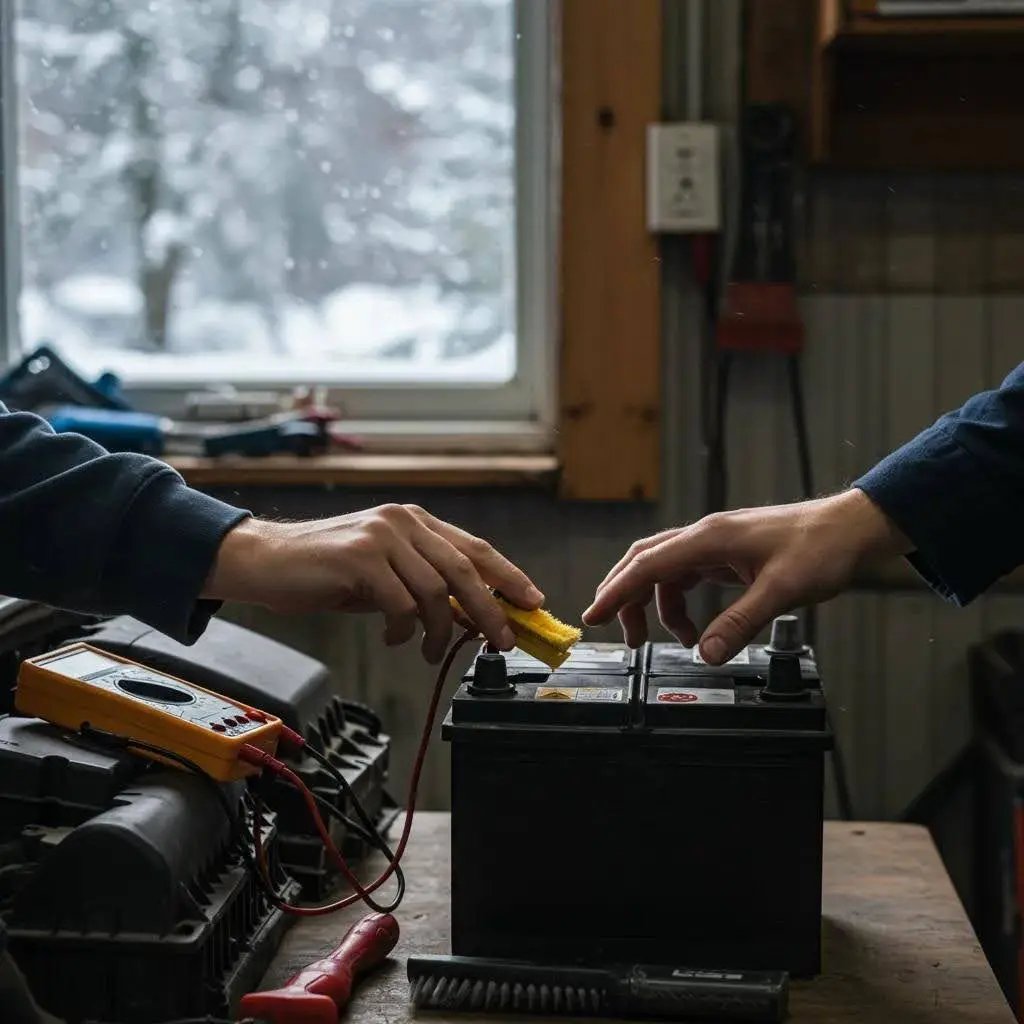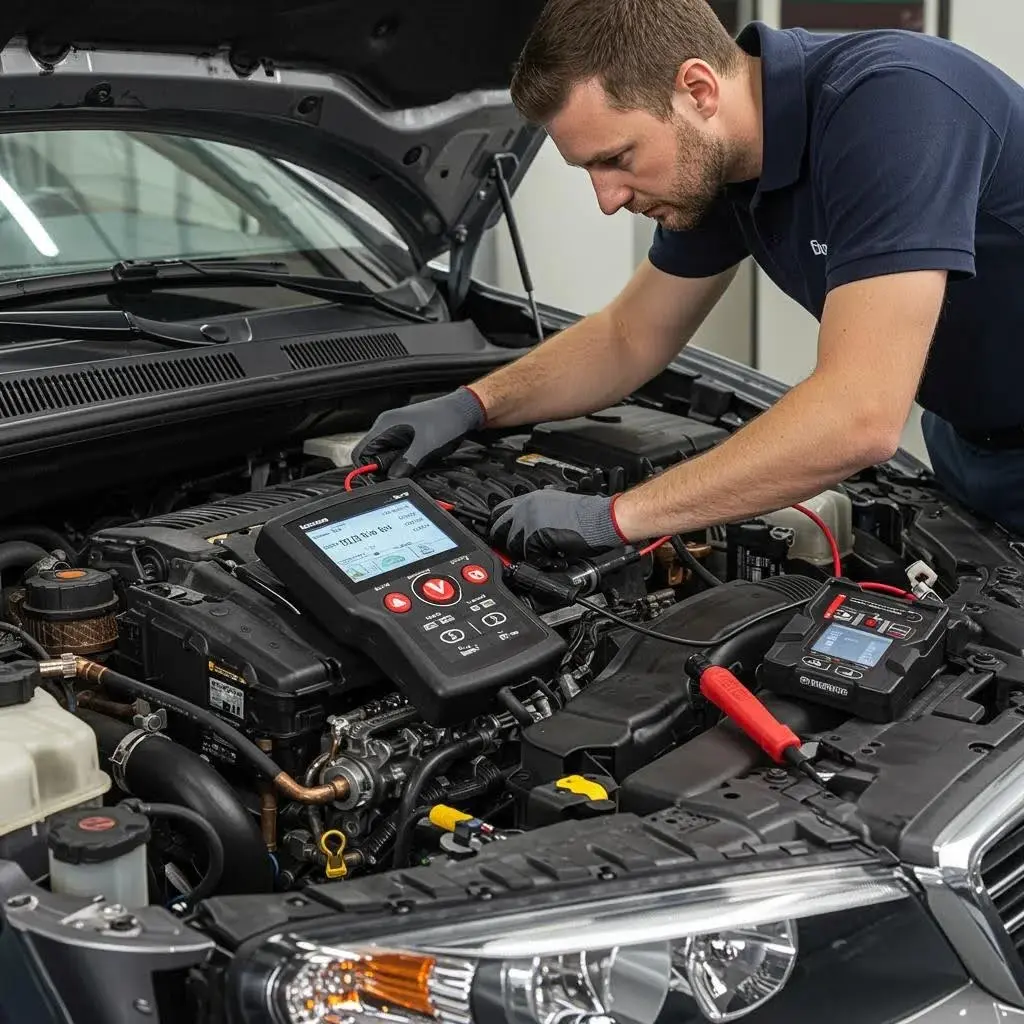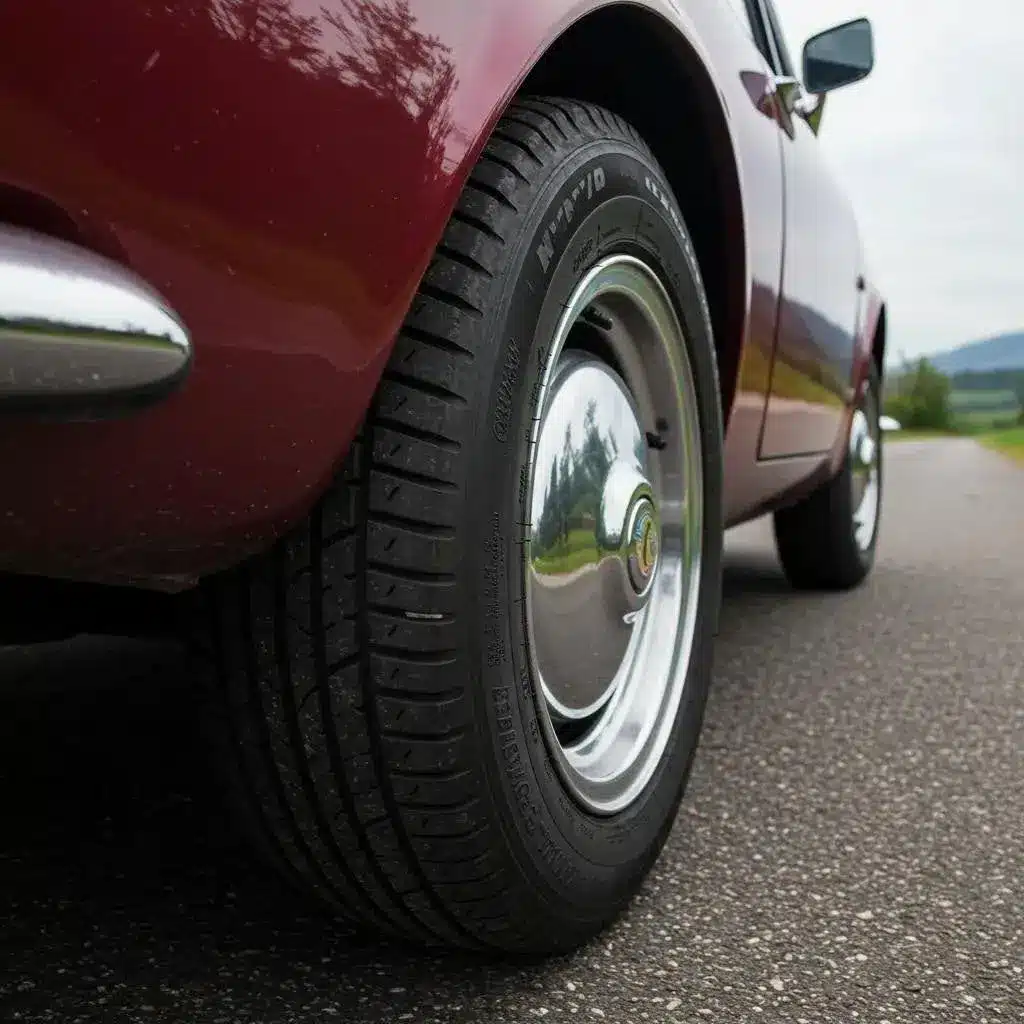
Our winter car maintenance checklist guides Tonbridge drivers through pre-winter inspections that keep your vehicle safe, dependable, and comfortable all season.
This guide covers essential checks, from your battery’s health and tyre condition to fluid levels, visibility, and heating performance. Discover how Sovereign Motor Engineers can support each step with servicing, MOT preparation, and specialised winter care for classic cars. You’ll learn:
- The key winter car checks every Tonbridge driver should perform
- How Sovereign Motor Engineers supports winter servicing and MOT readiness
- Advanced tips for battery care, tyre safety, fluid management, visibility, and emergency preparedness
- Specialised advice for winter storage and maintenance of classic vehicles
By following this comprehensive winter car maintenance checklist, you can reduce breakdown risk, optimise performance, and make the most of services tailored to Tonbridge roads and UK winter conditions.
Essential Winter Car Checks Every Tonbridge Driver Should Know
Preparing your vehicle for winter means inspecting the systems most affected by freezing temperatures, moisture, and reduced grip. This checklist groups them into five areas: electrical, tyres, fluids, visibility, and safety, each vital to your car’s cold-weather reliability and roadworthiness.
Ensuring your battery is charged, tyres are correctly specified, antifreeze protection is adequate, visibility is clear, and the heating system works efficiently reduces breakdown risk and supports MOT readiness. These checks form a practical winter car maintenance routine that local drivers can undertake themselves or book with Sovereign Motor Engineers for a complete service.
Key inspection areas:
- Assessing your battery’s health
- Checking the condition and pressure of your winter tyres
- Verifying fluid levels and freeze protection
- Inspecting wiper blades, lights, and demisting capabilities
- Examining the brakes, heating system, and emergency kit contents
This structured approach is detailed in the following subsections, followed by information on local services to ensure your vehicle’s reliability on Tonbridge roads during the coldest months.
How to Check Your Car Battery’s Health Before Winter Arrives
A car battery’s health is measured by its ability to deliver sufficient cold-cranking amps (CCA) in sub-zero temperatures. Cold weather slows reactions within lead-acid cells, reducing cranking power and raising the likelihood of a no-start. A load test measures voltage under simulated starter load, revealing capacity against the manufacturer’s specs.
To verify your battery’s condition:
- Use a digital battery tester to apply a controlled load
- Compare the measured resting voltage (ideally 12.4–12.7 V) against manufacturer guidance
- Check the terminals and cable connections for signs of corrosion or looseness
| Test Method | Measured Parameter | Winter Performance Benchmark |
|---|---|---|
| Resting Voltage Test | Open-circuit voltage | ≥ 12.4 V |
| Load Cranking Test | Voltage under load | ≥ 9.6 V for 10 seconds |
| Cold-cranking amp test | Cold-cranking amps (CCA) | ≥ manufacturer’s specified rating |
Regularly assessing your battery helps prevent sudden failures and clarifies when replacement is needed before winter sets in. This battery check leads into tyre-grip considerations, as poor traction can exacerbate electrical strain during cold starts.
Why Winter Tyres Are Essential for Safe Driving in the UK

Winter tyres use specialised compounds and tread patterns that remain flexible below 7°C, enhancing grip on cold, wet, and icy surfaces. Unlike all-season tyres, they use deeper sipes and wider grooves to channel slush and water, reducing aquaplaning risk and can shorten braking distances.
Opt for tyres marked with the three-peak mountain snowflake symbol to meet recognised winter performance standards, and keep tread depth at least 3 mm to improve traction. Properly fitted winter tyres improve handling and stability, providing predictable steering on Tonbridge’s frosty country lanes.
- Choose tyres clearly marked with the three-peak mountain snowflake emblem
- Confirm tread depth is at least 3 mm for optimal winter grip
- Regularly monitor tyre wear and rotation for consistent performance
Effective tyre selection and maintenance work hand in hand with battery reliability; a vehicle that moves off smoothly on a low-friction surface places less strain on the starter motor, helping preserve electrical health throughout the season.
Which Vehicle Fluids Need Checking and Topping Up for Cold Weather?
Vehicle fluids protect engine components, transmission systems, and visibility mechanisms from freezing damage and corrosion. Maintaining correct levels and using winter-grade specifications helps prevent blockages, thickened lubricants, and inefficient heating in sub-zero temperatures.
Essential fluids for winter readiness include:
- Antifreeze/coolant: Use a 50:50 mix (ethylene glycol) for a freezing point as low as −37°C
- Engine oil: Opt for a low-temperature-rated oil (e.g., 5W-30) to maintain flow during cold starts
- Screen wash: Ensure it contains freeze-resistant additives effective down to −20°C for unobstructed visibility
| Fluid Type | Winter Specification | Protective Function |
|---|---|---|
| Engine Coolant | 50:50 antifreeze/coolant mix | Prevents freezing and inhibits corrosion |
| Engine Oil | Low-viscosity multigrade 5W-30 | Maintains lubrication and reduces wear |
| Screen Wash | Freeze-resistant concentrate | Clears ice and prevents freezing on the windscreen |
Performing these fluid checks helps prevent issues such as stalled coolant circulation, oil starvation, and obscured visibility, all of which can affect braking efficiency and wiper performance.
How to Ensure Visibility: Winter Checks for Wiper Blades and Lights
Visibility systems include wiper blades, windscreen washer jets, and exterior lighting, all of which must function reliably in rain, sleet, and early winter dusk. Rubber wiper blades can harden in low temperatures, reducing screen contact and leaving streaks that obscure hazards. Dull or misaligned lights reduce range and compromise reaction times.
Inspect and service your visibility components by:
- Replacing worn blades with winter-rated rubber designed for flexible performance down to −30°C
- Flushing the washer reservoir and jets with winter-grade screen wash to prevent nozzle blockages
- Cleaning and aligning headlights, brake lights, and indicators to ensure maximum brightness
Regular maintenance of these systems enhances road safety and driver confidence, and sets up the critical brake and heating checks where reliability drives overall winter preparedness.
What Are the Essential Brake and Heating System Inspections for Winter?
Brakes and heating systems are fundamental to vehicle safety and comfort. Brake fluid can absorb moisture over time, lowering its boiling point and risking vapour lock during repeated braking on icy roads. Heating and demisting systems rely on efficient coolant circulation and a healthy blower motor to clear condensation and ice buildup.
Key inspection steps include:
- Checking the brake fluid level and its boiling point (DOT 4 is recommended with a high dry boiling point)
- Examining brake pad thickness and rotor condition to ensure consistent stopping power
- Verifying the heater core and blower functionality to maintain cabin warmth and effective demisting
Ensuring responsive brakes and an efficient heater completes the core winter car maintenance checklist, preparing your vehicle for tailored local servicing options from Sovereign Motor Engineers to ensure it’s winter-ready.
How Sovereign Motor Engineers Supports Winter Car Servicing in Tonbridge
Sovereign Motor Engineers combines local expertise with specialised equipment to turn DIY checks into comprehensive winter services. From detailed battery diagnostics and professional tyre fitting to essential fluid maintenance and MOT winter preparation, every car service aligns with the outlined inspection clusters, supporting reliable performance on Tonbridge roads.
Trusted winter servicing reduces strain on your vehicle’s systems and integrates with our classic car winterisation packages. Our skilled technicians utilise advanced testing devices to confirm your vehicle meets target specifications, ensuring each winter check delivers a lasting improvement.
What Winter Battery Testing and Replacement Services Does SME Provide?
Sovereign Motor Engineers conducts thorough load testing and cold-cranking amp analysis using calibrated digital testers.
Our technicians verify capacity against manufacturer ratings and recommend replacement when performance drops below essential winter thresholds. Any replacement units we supply are designed to meet or exceed cold-start requirements, helping prevent seasonal no-starts.
This professional testing, coupled with expert installation, removes guesswork from DIY checks and helps keep your electrical systems robust throughout the coldest months.
How Can SME Help with Winter Tyre Fitting and Safety Checks?
We offer tyre supply and fitting (including winter options), wheel alignment, and detailed tread-depth measurement.
We provide drivers with expert guidance on selecting tyres featuring the three-peak mountain snowflake emblem and maintaining correct pressures, accounting for seasonal temperature changes. Following fitting, a post-service safety inspection confirms even wear and secure mounting.
The outcome is a bespoke winter tyre solution that meaningfully enhances grip and stability on wet, icy, and snow-covered surfaces.
What Are SME’s Antifreeze and Coolant System Maintenance Options?
We include coolant checks and refills as part of servicing and replace coolant where required. Our technicians meticulously inspect hoses, clamps, and the thermostat to ensure efficient heat transfer and reliable freeze protection. This essential service prevents corrosion, overheating, and freeze-related blockages before they compromise engine integrity.
How Does SME Prepare Your Vehicle for MOT Winter Readiness?
We offer MOT tests and carry out pre-MOT checks on request, focusing on cold-weather vulnerabilities: brake fluid moisture content, lighting in low-light conditions, and wiper and wash system efficacy. By addressing these winter-specific issues before your test, drivers can avoid seasonal delays and support a smooth MOT approval.
Why Choose SME Specialists in Classic Car Repairs, Servicing, and Restoration
Classic vehicles require meticulous attention to original components, sensitive electronics, and ageing materials. SME offers bespoke winterisation services, including desulphating battery treatments, preparation for moisture-controlled storage, and protective coverings.
Enthusiasts benefit from secure off-site storage and periodic system checks designed to preserve the vehicle’s integrity throughout winter.
Best Practices for Maintaining Your Car Battery During Winter

Effective winter battery maintenance centres on regular monitoring, preventative conditioning, and strategic use. Cold temperatures increase internal resistance, making capacity thresholds critical for sustaining starter motor performance. Adopting best practices can extend battery life and minimise breakdown risks in sub-zero conditions.
Maintain your battery’s health by:
- Testing voltage and CCA monthly using a reliable tester
- Limiting short journeys that prevent the battery from completing full recharge cycles
- Using a smart trickle charger when the vehicle is idle for extended periods
Adhering to these routines helps preserve charge capacity and prevents deep discharge, which can accelerate plate corrosion and sulphation. Regular maintenance supports the comprehensive winter car checklist, where early detection of battery weakness informs timely service decisions.
What Are the Signs of a Weak or Failing Battery in Cold Weather?
A battery struggling in cold conditions often shows slow engine cranking, dim interior lights when starting, and illuminated dashboard warning lights. Resting voltage readings below 12.2 V indicate reduced capacity, while readings below 9.6 V under load confirm the battery’s inability to meet winter cranking requirements.
Recognising these early warning signs prompts drivers to seek timely maintenance or replacement, thereby averting no-start scenarios in freezing temperatures.
How Often Should You Check Your Car Battery in Winter?
Drivers should perform battery voltage and load tests at least once a month throughout winter. Discharge rates accelerate in colder temperatures, so a four-week interval is effective for tracking performance and scheduling timely service.
What Are Expert Tips for Extending Battery Life in Winter?
Experts recommend the following:
- Warming the vehicle in a sheltered area before starting to reduce the starter motor’s load
- Minimising the use of high-drain accessories (like heated seats or defrosters) with the engine off
- Cleaning terminals and applying dielectric grease to prevent corrosion
- Ensuring the alternator output remains within the optimal range of 13.8 V–14.4 V for effective recharging
These practices complement professional testing and installation services, supporting reliable, winter-ready performance.
How Does SME Test and Replace Batteries to Prevent Winter Breakdowns?
Sovereign Motor Engineers utilises ISO-compliant devices to measure cold-cranking amps and internal resistance. When results fall below critical winter thresholds, our technicians offer replacements matched to your vehicle’s make and model. Installation includes thorough terminal cleaning and secure mounting, ensuring dependable cold starts throughout the season.
Ensuring Winter Tyre Safety: Tread Depth, Pressure, and Choosing the Right Tyres in the UK
Winter tyre safety hinges on careful attention to tread design, depth, and inflation levels, which collectively determine grip, braking distance, and handling precision in cold weather. Underinflated tyres lose rigidity and generate excess heat, while shallow tread struggles to evacuate slush, increasing aquaplaning risk.
To maintain optimal tyre safety:
- Check tread depth monthly and replace tyres when tread approaches 3 mm
- Monitor tyre pressure weekly, adjusting for ambient temperature drops (approximately 0.1 bar per 10°C change)
- Select tyres with a soft-compound winter specification for temperatures consistently below 7°C
| Tyre Attribute | Measurement Method | Winter Performance Target |
|---|---|---|
| Tread Depth | Depth gauge at the central grooves | ≥ 3 mm |
| Pressure Variation | Tyre gauge at cold rest | Manufacturer-specified ± 0.1 bar |
| Compound Rating | Three-peak snowflake symbol | Required for optimal winter grip |
Maintaining these parameters can reduce stopping distances on icy surfaces and preserve handling consistency. This also links back to battery care by reducing the electrical strain required for smoother winter starts.
What Is the Recommended Tyre Tread Depth for Winter Driving?
While UK law mandates a minimum tread depth of 1.6 mm, experts recommend 3 mm for winter conditions. This increased depth helps evacuate water and slush, optimising traction on cold, wet roads.
How to Check and Maintain Correct Tyre Pressure in Cold Weather?
Use a calibrated tyre pressure gauge to check pressure when tyres are cold, ideally before driving. Compare readings to the manufacturer’s specifications and inflate to compensate for drops (typically around 1 psi for every 5°C decrease). Regular checks prevent uneven wear and maintain stable handling.
When Should You Switch to Winter Tyres on UK Roads?
It is advisable to switch to winter tyres once average daily temperatures consistently fall below 7°C. In the UK, this typically occurs from October through April. This timing ensures tyre compounds perform optimally, maximising grip and braking efficiency.
How Does SME Provide Winter Tyre Fitting and Inspection Services?
Sovereign Motor Engineers fits winter tyres using precision balancing machines and advanced wheel alignment equipment. Each installation includes a thorough post-fit safety check of pressure, tread depth, and torque specifications, delivering a fully prepared, ready-to-drive winter tyre package.
Why Checking Antifreeze and Other Fluids Is Vital for Winter Car Maintenance
Cold-weather fluids are essential for protecting engines, transmissions, and visibility systems from freeze damage, corrosion, and reduced operating efficiency. Antifreeze lowers the freezing point of engine coolant, engine oil viscosity ratings ensure proper pumpability, and screen wash additives prevent nozzle blockages.
Maintaining fluid integrity ensures uninterrupted climate control and mechanical protection, directly influencing braking responsiveness and demisting performance.
What Is Antifreeze and How Does It Protect Your Engine?
Antifreeze is a coolant additive, typically based on ethylene glycol, that depresses the freezing point of the engine coolant while raising its boiling point. This dual action prevents freeze-induced blockages and boil-over under heavy load. It also contains corrosion inhibitors to protect metal components.
How to Check and Top Up Antifreeze Levels Safely?
Park your vehicle on level ground with a cold engine. Carefully open the expansion tank and inspect the coolant reservoir marker. Add a pre-mixed 50:50 antifreeze/coolant solution up to the “max” level, ensuring you wear protective gloves and eyewear to prevent chemical exposure.
What Other Fluids Should Be Monitored for Winter Readiness?
Key fluids to monitor include:
- Brake fluid: Ensure it has a high dry boiling point (DOT 4 standard is recommended)
- Transmission oil: Check that it is rated for low viscosity in automatic gearboxes
- Power steering fluid: Verify its level to maintain proper pump and rack lubrication at low temperatures
How Can SME Help with Fluid Checks and Winter-Grade Screen Wash Top-Ups?
Sovereign Motor Engineers offers a comprehensive fluid service that includes replacing old coolant and brake fluid, checking transmission oil levels, and refilling the screen wash reservoir with a winter-grade concentrate. This proactive maintenance helps prevent freeze-related failures and preserves the integrity of your vehicle’s essential systems.
Essential Visibility and Safety Checks for Winter Driving
Winter visibility depends on the reliable operation of your wiper system, clear lighting, and dependable heating and demisting functions. Combining these checks with a well-stocked emergency kit helps prevent hazards such as snow-blindness, glare, and cabin icing, forming a robust winter safety strategy.
Our technicians evaluate each component’s function and provide expert advice on necessary replacements or upgrades, ensuring Tonbridge drivers remain visible to others and can react swiftly to sudden weather changes.
How to Inspect and Replace Wiper Blades for Winter Conditions?
Inspect wiper blade edges for any signs of cracking or stiffness. Replace them with winter-rated rubber blades specifically designed to resist ice build-up. Test the sweep range at various speeds to confirm full coverage and efficient wiping action.
Why Are Fully Functional Lights Critical in Winter?
Reduced daylight hours and glare from wet road surfaces demand bright, correctly aligned headlights and clear indicators. Lighting inspections verify bulb brightness, lens clarity, and aiming angles to maintain maximum illumination and enhance driver awareness.
How to Prepare Your Car’s Heating and Demisting Systems for Cold Weather?
Run the heating system at full power to confirm blower operation and coolant flow through the heater core. Test demisting to ensure rapid windscreen clearing, verifying that defrost vents are unobstructed and cabin filters are clean.
What Emergency Kit Items Should You Carry for Winter Breakdowns?
A winter emergency kit provides essential tools and supplies to safely manage roadside inconveniences.
Before reviewing the list, note that each item addresses a potential failure mode, from energy loss to immobilisation in icy conditions.
- A portable jump starter or booster pack to revive a flat battery
- Insulated blanket and warm clothing to prevent hypothermia
- High-visibility jacket and warning triangle for roadside visibility
- Snow shovel or ice scraper to clear wheels and windows
- Non-perishable snacks and bottled water for extended delays
Carrying these supplies helps prevent exposure and supports basic repairs until professional assistance arrives.
Preparing Classic Cars for Winter: Specialised Winterisation and Storage Tips in Tonbridge
Classic car bodies, wiring, and original materials face unique winter challenges, including moisture ingress, electrical corrosion, and brittle components. Tailored winterisation strategies effectively mitigate these risks, preserving heritage vehicles during months of inactivity.
Effective preparation involves thorough cleaning, rustproofing, meticulous battery maintenance, and the use of controlled storage environments to maintain mechanical integrity and original finishes.
What Are the Unique Winter Challenges for Classic Cars?
Classic vehicles often feature aged rubber seals and original lead-acid batteries that are prone to drying out and sulphation. Excess humidity can accelerate rust formation on exposed metal panels and underbody components, while original wiring looms may become brittle and susceptible to short circuits.
How to Protect Classic Car Batteries and Electrical Systems in Winter?
Condition battery cells with desulphation treatments and secure connections using moisture-repellent dielectric grease. Consider using a smart trickle charger to maintain float voltage and prevent deep discharge during storage, thereby preserving starter capacity for spring startups.
What Are the Best Practices for Classic Car Storage During Cold Months?
Optimal storage involves a dry, temperature-controlled space equipped with dehumidifiers to minimise condensation. Elevate the vehicle on axle stands to prevent tyre flat-spotting, and periodically rotate the wheels. Use breathable car covers that allow moisture to escape and prevent mould formation.
How Does SME Provide Classic Car Winterisation Services in Tonbridge?
Sovereign Motor Engineers offers bespoke winterisation packages that include battery conditioning, application of corrosion protection sprays, bodywork inspections for seal integrity, and guidance on controlled storage solutions. Enthusiasts benefit from periodic system checks and expert advice on reactivation procedures for spring motoring.
Frequently Asked Questions About Winter Car Maintenance in Tonbridge
Many drivers in Tonbridge ask about core winter checks, recommended service intervals, preventative measures, and the tell-tale signs that indicate professional intervention is needed.
Understanding these common concerns helps streamline preparation and ensures that both DIY enthusiasts and those seeking workshop support can effectively prepare their vehicles for winter conditions.
Key concerns typically include:
- Core checklist items: which systems require inspection and why
- Service timing: the optimal intervals for winter servicing and MOT readiness
- Service scope: what a winter car service at Sovereign Motor Engineers encompasses
- Breakdown prevention: effective strategies to avoid roadside failures
- Repair indicators: early warning signs that necessitate professional attention
By addressing these questions through structured checks and expert workshop services, Tonbridge drivers can maintain reliability, safety, and comfort throughout the winter months.
Maintaining your vehicle during winter demands meticulous attention to electrical systems, tyre safety, fluid integrity, visibility, and emergency preparedness. Incorporating professional support from Sovereign Motor Engineers elevates this checklist into a comprehensive winter-proofing service, delivered with local expertise and specialised classic car care.
Investing in proper inspections and servicing before temperatures drop ensures peace of mind, extends component life, and helps ensure optimal performance on Tonbridge roads, even in the harshest weather.




